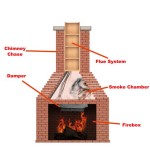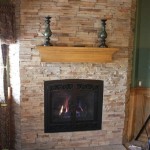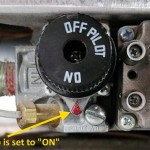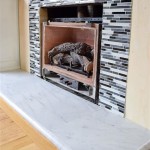How To Mount Your TV Above a Fireplace: A Comprehensive Guide
Mounting a television above a fireplace has become a popular design choice, offering a visually appealing and space-saving solution for many homes. However, this installation requires careful planning and execution to ensure both optimal viewing experience and the safety of the equipment. This article provides a detailed guide on how to successfully mount a TV above a fireplace, covering essential considerations, necessary tools, and step-by-step instructions.
Before beginning any installation, it’s crucial to assess the feasibility of the project. Several factors can impact the success and suitability of mounting a TV above a fireplace. Failing to consider these can lead to costly mistakes or even equipment damage.
Key Point 1: Assessing the Feasibility and Suitability
The first consideration is the height of the fireplace mantel and the overall height of the wall. Ideally, the center of the TV screen should be at eye level when seated. If the fireplace mantel is already high, mounting the TV above it may result in an uncomfortable viewing angle that can strain the neck. Measure the height from the floor to your eye level while seated in your typical viewing position. This measurement will help determine if the fireplace location is suitable for achieving an optimal viewing experience.
Another critical factor is the heat emanating from the fireplace. Excessive heat can damage the sensitive electronic components of the TV, shortening its lifespan or causing permanent failure. Consider the type of fireplace – gas, electric, or wood-burning – and the amount of heat it produces. Gas and electric fireplaces typically produce less heat than wood-burning fireplaces, making them more suitable for TV installations. If you have a wood-burning fireplace, consider installing a substantial mantel that extends outwards to deflect heat away from the TV. You should also install a heat sensor near where the TV would be mounted to monitor temperature changes. Any reading above 100 degrees Farenheit can cause long term damage to the TV.
Finally, examine the wall structure above the fireplace. Is it made of drywall, brick, or concrete? Drywall walls are generally easier to work with, but you'll need to locate the wall studs to ensure proper support for the TV mount. Brick and concrete walls require specialized drilling equipment and anchors. Knowing the wall type will dictate the appropriate mounting hardware and installation techniques.
Key Point 2: Gathering Tools and Materials
Once the feasibility of the installation is confirmed, the next step is to gather the necessary tools and materials. Having everything on hand before starting the project will streamline the process and prevent unnecessary delays.
Essential tools include a stud finder, a level, a drill with appropriate drill bits (for drywall, brick, or concrete), a screwdriver (or drill with screwdriver bits), a measuring tape, a pencil, safety glasses, and work gloves. If dealing with brick or concrete, a hammer drill and masonry drill bits are mandatory. A wire fish tape or flexible rods can be useful for running cables through the wall.
Materials needed include a TV mount that is compatible with your TV's size and weight, wall anchors (if needed, especially for drywall), screws, cable ties, electrical tape, and HDMI cables. Consider purchasing a tilting TV mount to adjust the viewing angle if the TV is mounted higher than optimal eye level. A cable management system can help conceal wires and create a cleaner aesthetic.
Choosing the right TV mount is paramount. Ensure it can support the weight of the TV and that it is VESA compatible (Video Electronics Standards Association). VESA compatibility refers to the standardized hole patterns on the back of TVs that are used for mounting. Check your TV's specifications to determine its VESA pattern and select a mount that matches. Buying slightly better grade hardware may avoid costly replacements in the future.
Key Point 3: Step-by-Step Installation Process
With the necessary tools and materials gathered, the actual installation can begin. Following each step carefully will contribute to a safe and successful TV mounting experience.
First, locate the wall studs using a stud finder. Mark the stud locations with a pencil. If you are mounting to brick or concrete, determine the desired mounting location and mark the drill points. If mounting to drywall, align the TV mount bracket with the marked stud locations and use a level to ensure it is straight. Pre-drill pilot holes through the bracket into the studs. If a stud is not in the ideal location, use appropriate wall anchors to reinforce the mount. Secure the bracket to the wall using screws. For brick or concrete, use a hammer drill to create pilot holes and insert appropriate masonry anchors before securing the bracket.
Next, attach the TV mounting arms to the back of the TV using the screws provided with the mount. Ensure the arms are securely fastened. Carefully lift the TV and align the arms with the bracket on the wall. Secure the TV to the bracket according to the mount's instructions. This step often requires two people to safely lift and maneuver the TV.
After the TV is mounted, run the necessary cables (HDMI, power, etc.) from the TV to their respective sources. Concealing the cables helps to maintain a clean and organized look. You can run cables through the wall using a wire fish tape or flexible rods. Create access holes near the TV and near the power outlet or cable box locations. Feed the cables through the wall and connect them to the appropriate devices. Use cable ties to bundle the cables together and keep them organized which can prevent the cable from falling down the wall or being pulled out of the TV. Install a cable management system to cover the access holes and hide the wires.
Once all the cables are connected and concealed, test the TV to ensure it is functioning properly. Adjust the viewing angle, if necessary, using the tilting mechanism of the TV mount. Clean up the surrounding area and dispose of any packaging or debris.
By carefully assessing the feasibility, gathering the appropriate tools and materials, and following the step-by-step installation process, homeowners can successfully mount a TV above a fireplace, creating a stylish and functional entertainment center.

Can I Mount My Tv Above The Fireplace

Everything You Need To Know About Tv Mounts For Fireplaces

Can I Mount My Tv Above The Fireplace

3 Alternatives To Mounting Your Television Above The Fireplace Avs

Can I Mount A Tv Over My Fireplace Higold Outdoor Furniture

Safely Mount A Tv Above An Electric Fireplace Touchstone Home S Inc

Is It Safe To Mount Your Tv Above The Fireplace Chimney And Wildlife

ᑕ❶ᑐ What To Consider Before Mounting A Tv Above Fireplace

Tv Wall Mount Installation With Wire Concealment Over Fireplace

How To Hang A Tv Over Fireplace
Related Posts








